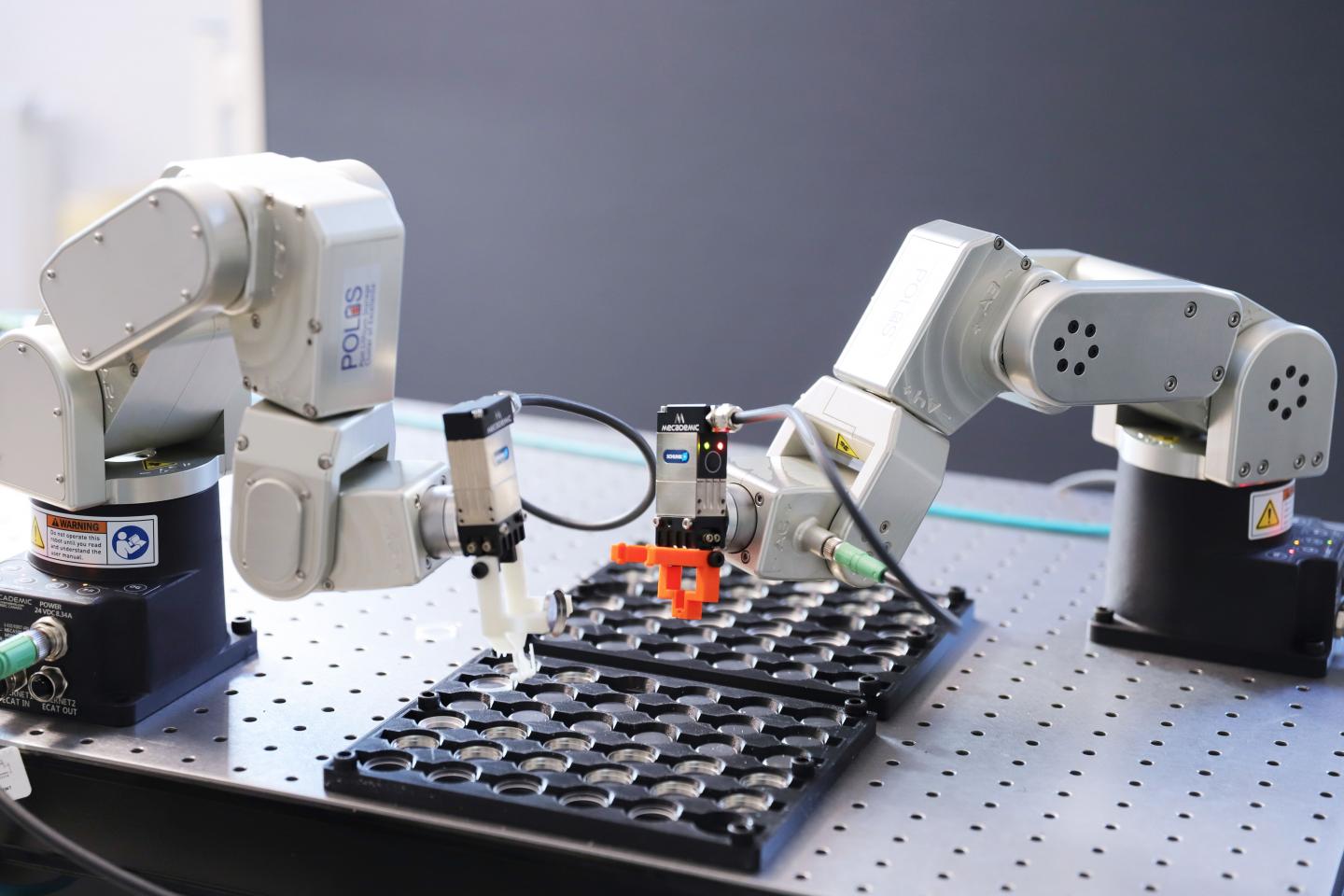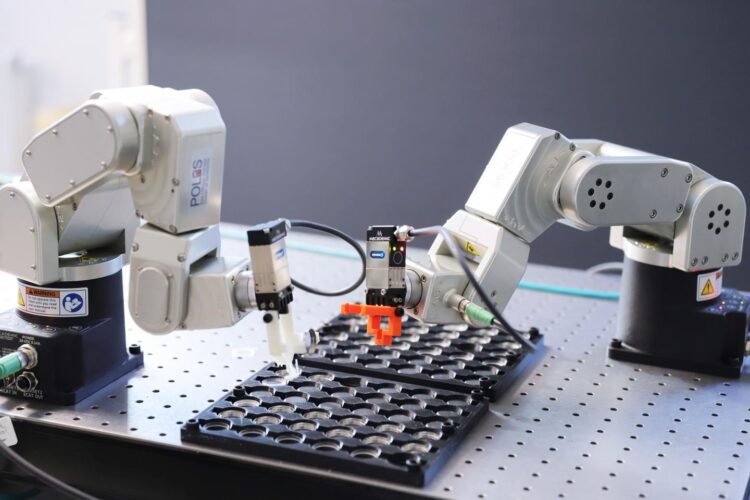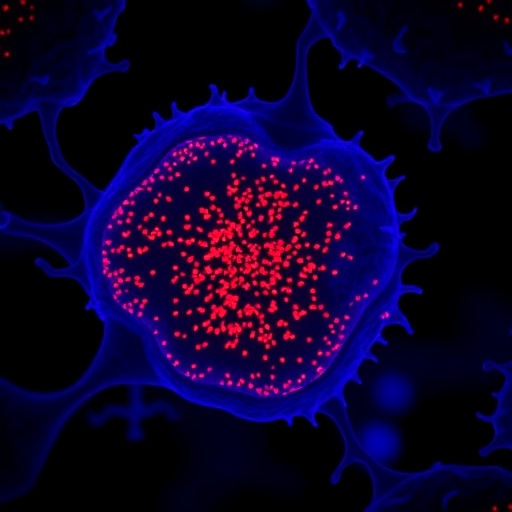The European research initiative BATTERY 2030+ presents goals — research platform CELEST with KIT, Ulm University, and ZSW participates

Credit: Daniel Messling, KIT
To develop tomorrow’s batteries, partners from science and industry all over Europe have launched the research initiatve BATTERY 2030+. Now, a roadmap defines the milestones in more detail: A joint platform for the development of materials with the help of artificial intelliegence (AI), networked sensors and self-healing technology for batteries, and sustainable production and recycling processes. Via the CELEST platform, Karlsruhe Institute of Technology (KIT), Ulm University, and the Baden-Wuerttemberg Center for Solar Energy and Hydrogen Research (ZSW) participate in the consortium.
Transition to a climate-neutral society requires fundamental changes in the way we produce, use, and store energy. High-performance battery storage systems that are sustainable, safe, and inexpensive are the goal of European research initiative BATTERY 2030+. Now, the research institutions and companies involved have published a roadmap that defines the properties of future batteries and lists measures to accelerate development. Three main research lines are identified: “We want to accelerate our search for new materials and the right material mix, develop novel functions, and establish production and recycling concepts,” says Professor Maximilian Fichtner, Head of the Energy Storage Systems Group of KIT’s Institute of Nanotechnology, Deputy Director of the Helmholtz Institute Ulm, and scientific spokesperson of the Center for Electrochemical Energy Storage Ulm & Karlsruhe, CELEST for short. “With BATTERY 2030+, we are now pooling the expertise in the respective areas existing in Europe and work in a coordinated way. This opens up the chance to keep up with the frontrunners in battery development, also in the USA and Asia.”
Accelerated Development of Materials with Artificial Intelligence
To learn how certain materials behave and how they have to be applied to possess certain properties, BATTERY 2030+ is initially aimed at establishing the only high-throughput platform worldwide (MAP, Materials Acceleration Platform). Combination of automatic synthesis, characterization, and modeling of materials with data mining techniques and AI in experiment evaluation and planning is to decisively accelerate the development of new battery materials. Based on this joint platform, BATTERY 2030+ will start to analyze the properties of material interfaces, such as the interface between the electrode and the electrolyte or between the active material and various additives. This battery interface genome (BIG) is to help researchers develop promising approaches to new, high-performance batteries.
Intelligent Functionality and Sustainable Development Processes
External factors, such as extreme temperatures, mechanical loading, excessive output during operation or just aging in the course of time adversely affect the performance of a battery. The researchers involved in BATTERY 2030+ therefore plan to jointly develop intelligent and networked sensor concepts to directly monitor chemical and electrochemical reactions in the battery cell. In this way, they might detect early stages of battery failure or undesired side reactions causing battery aging. In addition, the next-generation batteries are to be equipped with “self-healing capacity:” Damage inside a battery that causes battery failure may be compensated by a smart use of materials. The sensors and self-healing function are to make future batteries more reliable and persistent. Even spent cells of high quality might be attractive for second use. Moreover, BATTERY2030 + is aimed at reaching maximum sustainability during the development phase already. Parameters, such as production with a minimum of resources, recyclability, critical resources, and toxicity, will be taken into account by the algorithms used for MAP-based development of new battery concepts.
First projects proposed in the roadmap for BATTERY 2030+ have already been approved by the EU and are now ready to start. CELEST is an important actor in the project for accelerated development of materials, modeling, and data evaluation by AI as well as the associated autonomous robotics.
Click here for the roadmap: https:/
###
About the BATTERY 2030+ Consortium
Apart from KIT and Ulm University, five universities are consortium members of BATTERY 2030+: The University of Uppsala (coordinator), the Polytechnic Institute of Turino, the Technical University of Denmark, the Free University of Amsterdam, and the University of Muenster. In addition, several research centers have joined the consortium: The French Research Center for Alternative Energies and Nuclear Energy CEA, the French National Center for Scientific Research CNRS, Forschungszentrum Juelich, Fraunhofer Society, Fundacion Cidetec, the National Institute for Chemistry of Slovenia, the Organisation for Applied and Technical Research of Norway. Other members of the consortium are the industry associations EMIRI, EASE, RECHARGE, and the Absiskey company. The consortium is supported by official European and national bodies, including ALISTORE ERI, EERA, EIT Inno-Energy, EIT RawMaterials, EARPA, EUROBAT, EGVI, CLEPA, EUCAR, KLIB, RS2E, by the Swedish Center for Electromobility, by PolStorEn, ENEA, CIC energigune, IMEC, and the Tyndall National Institute.
More informationen: http://www.
About the CELEST Research Platform
The CELEST (Center for Electrochemical Energy Storage Ulm & Karlsruhe) research platform for strategic collaboration was established in 2018 by KIT, Ulm University, and the Center for Solar Energy and Hydrogen Research Baden-Wuerttemberg (ZSW). It is one of the biggest battery research activities in international comparison. 45 working groups from 29 institutes of KIT, Ulm University, and ZSW contribute their complementary expertise to CELEST” from fundamental research to close-to-practice development to technology transfer. CELEST focuses on three research fields: Lithium-ion technology, energy storage beyond lithium, and alternative technologies for electrochemical energy storage and conversion.
More about CELEST: http://www.
More about the KIT Energy Center: http://www.
Press contact:
HIU: KIT: Universität Ulm:
Patrick von Rosen, Phone.: 0731 50 34013, E-Mail:
Dr. Martin Heidelberger, Press Officer, Phone.: +49 721 608-21169, E-Mail:
Annika Bingmann, Phone.: 0731 50 22121, E-Mail:





